Greetings Steemians,
"I think of composition as the final frontier in painting. An infinite area of discovery. For this reason, I don't put stock in any "rules" of composition. Rules are finite. Rules constrain. The primary "rule" I have is to ask myself, "Does it look good?" And so the nature of painting is to search. You can plan a painting to death, but you won't really know a damn thing until brushstrokes happen.
In Queens, I wanted to capture a feeling of space and quiet as contrasting support for the intense foci. I wasn't sure if the large restful area, and thus the entire painting, would be successful until I was nearly finished. It came down to exactly how the emptiness was painted. When it comes to composition, the how is just as important as the what."
(Excerpt from my FIGURE book, page 12)
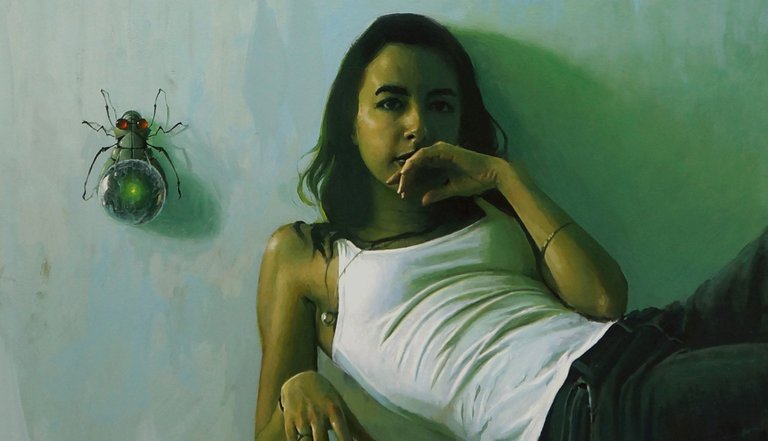
Not many stage photos of this one. Sometimes I forget when I'm in the zone. First stage:
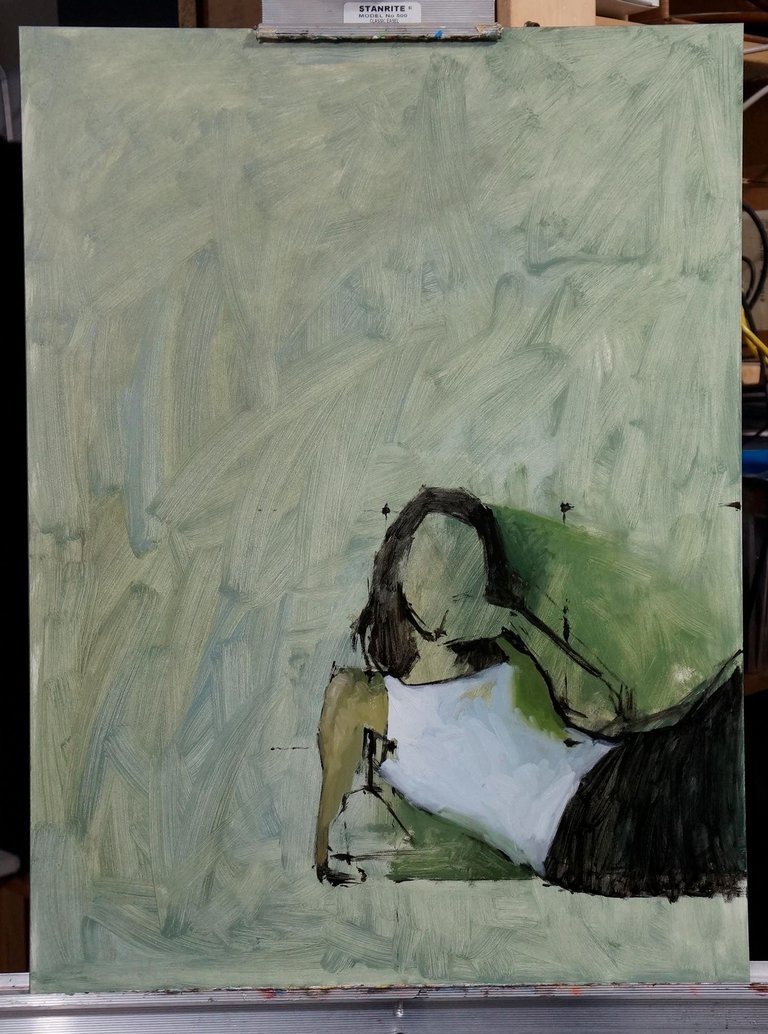
Palette:
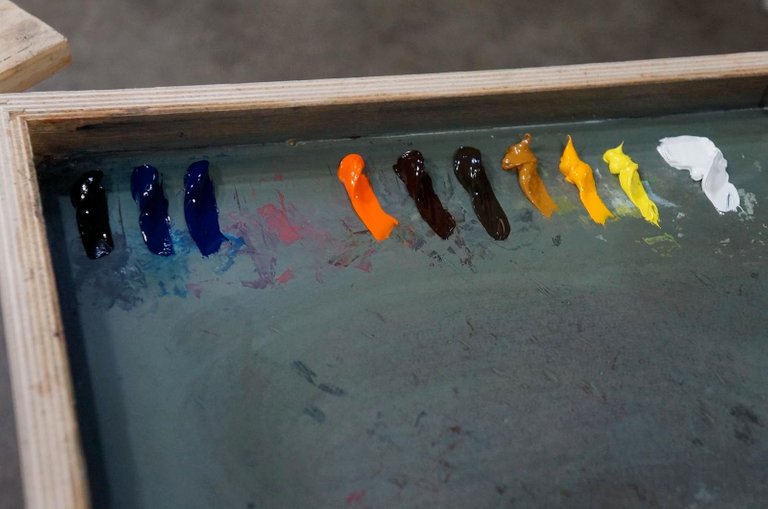
See that empty spot on the palette? I quickly realized that I wasn't going to be using any reds in this painting, so I omitted my alizarin crimson and cadmium red.
(For the curious: From L-R: Ivory Black, Phthalo Blue, Ultramarine Blue, [Alizarin Crimson, Cadmium Red] Cadmium Orange, Burnt Umber, Raw Umber, Yellow Ocher, Cadmium Yellow, Cadmium Lemon, Titanium White. These are Griffin Alkyds, and I'm using Neo Megilp medium. I've been alternating between alkyds and traditional oils. Both have their advantages. Alkyds dry very fast, sometimes convenient for particular painting effects and for quick delivery to a venue. Traditional oils dry slower, allowing for longer wet-into-wet painting, which I mostly enjoy. I have noticed that the alkyds offer inferior opacity when I want that. Particularly noticeable in thick passages of red, orange, yellow placed over a dark. Weaker color content? I'm not sure. In other ways, the alkyds are very vibrant. Traditional oils are more forgiving and versatile, so I would always recommend those to a student. I love both.)
Next stage:

And the finished painting, "Queens" (24x18 oil on panel, 2015):
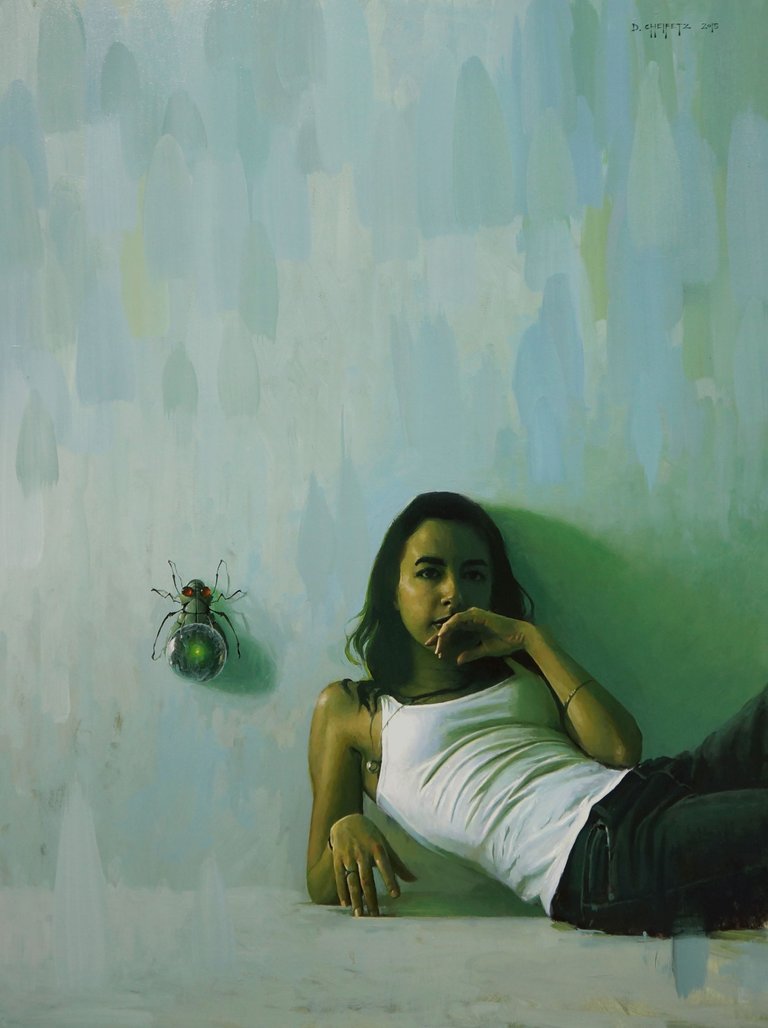
Details:
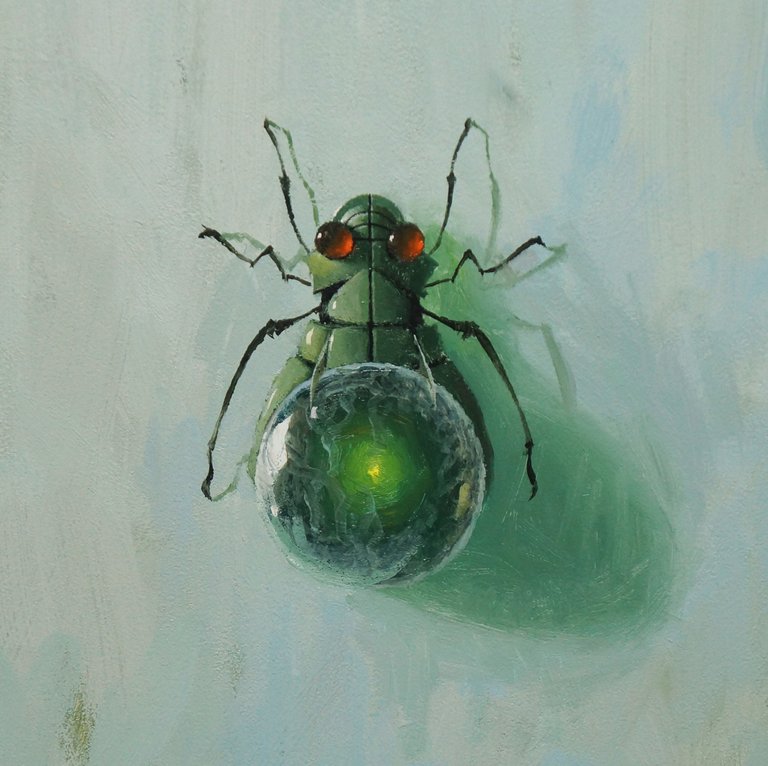
The "bug" above is a variant of a creature that has evolved over the years in many of my paintings. It started as a way to incorporate illustration and more imaginative elements into my work, and evolved into something more. It is called a Flrrbl. Or Flrrblz (plural). For the origin/explanation of Flrrbl go HERE. And if you're so inclined, you can view this [almost complete] visual history of the Flrrbl in one loooong image of crops from many paintings: Visual History of Flrrbl.
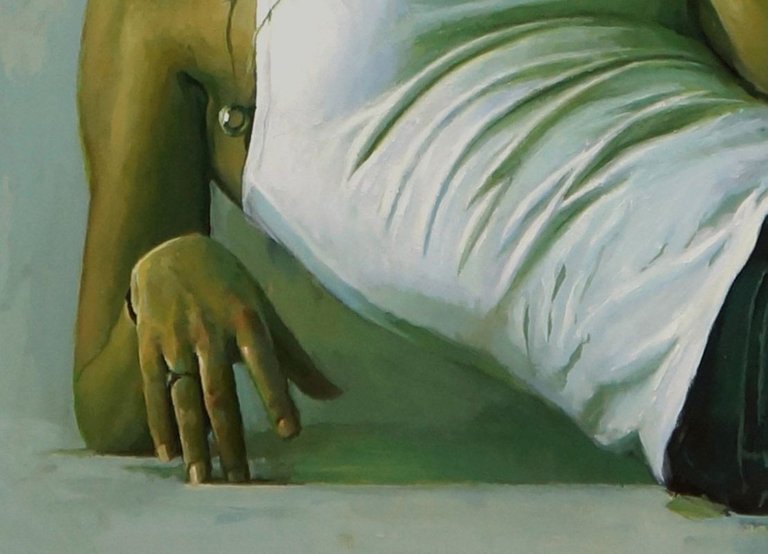

More about the model HERE
Thanks for reading! -David

That's a very interesting train of thought I have found to have been personally "plagued" with ever since I left the atelier a couple of years ago.
In a positive aspect, it is detremental for success to possess the knowledge of the fundamentals. Having an atelier experience for example allowed me to gain the ability to navigate on my own and think critically.
The downside is that I feel that the academic perspective myopically assumes that anything one would want to accomplish and that any problem or future existing problem lies within the narrowly defined parameters of that school of thought. And that the only "remedy" is to de-emphasize the unexplored territory and emphasize what works and what is known.
What I found to be have been completely jarring and vertigo inducing from a creative standpoint is that when one attempts to venture outwards in previously undiscovered realms or attempts to solve new problems, one is confronted with the issue that everything that was previously taught begins to crumble.
Yeah. Whenever it happens to me, it can be disorienting (and sometimes frustrating). But it is a good sign. A very good sign. It shows me that I'm on a tipping point where I will either fail or get a little better, and that eventually I will push past that boundary if I keep going. The fundamentals (rules/constraints) are necessary as they get you to a place of freedom...where you can find out that you don't know anything, and start to truly be creative. I imagine the levels of discarding what you previously thought you knew will be endless.... fun! ;p
Lovely details on both subjects, the open space makes it really interesting to my eyes. The necklace makes a nice touch.
Thank you 👍😁